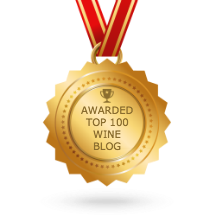It is produced by the prestigious Barón de Ley, a family-owned winery that is situated in a 16th-century monastery on the banks of the Ebro river, where vineyards and winemaking were introduced by monks in 1568. Inspired by French châteaux to craft premium, estate-grown Rioja wines, Barón de Ley was founded at the monastery in 1985, within the Rioja DOCa wine region of Spain. The name 'de ley' comes from the Spanish expression for 'legit', and at Barón de Ley they take care of every little detail to offer in every bottle an excellent, trustworthy wine - a genuinely good Rioja.
In 1990, Barón de Ley launched their first wines, including one of the signature wines of the Estate - this Gran Reserva. Success and growth followed soon thereafter, and by 2000, Barón de Ley renewed their winemaking philosophy with Gonzalo Rodríguez recruited as the new Chief Winemaker. Gonzalo encouraged the planting of new indigenous grape varieties, and further success and expansion followed. By 2008, Barón de Ley owned over 600 hectares of vineyards across the different sub-regions with a variety of microclimates and soils in Rioja. In 2018, Barón de Ley renovated their vinification facilities in order to use state-of-the-art winemaking techniques, while also constructing a new oak ageing cellar to expand their long-ageing capacity, which takes place in traditional French and American oak barrels.
Like the previous vintage, this red wine continues to be composed of Tempranillo and Graciano. The grapes were grown in Barón de Ley's old vineyards of low-yielding vines in Cenicero, Rioja Alta. The vineyard in Cenicero has alluvial calcareous soil, spans 94 hectares, and is situated at an elevation of 450 metres above sea level. At this site, the combination of the Mediterranean climate that is clearly influenced by the Atlantic Ocean, results in elegant wines with great ageing capabilities.
To craft this wine, they hand-harvest and hand-select the bunches, followed by mechanical selection of the berries using their state-of-the-art sorting table, ensuring that only the best grapes are selected with care in order to produce a wine of maximum quality. After undergoing alcoholic fermentation, the wine was aged for a minimum of 24 months in American and French oak casks, followed by a further 36 months in bottle prior to release.
The 2017 vintage in Rioja was rated as 'Very Good'. The growing season began with a dramatic frost in late April, which resulted in significantly lower yields and an extremely short vintage. This was followed up by a lack of rain during the ripening period, along with hot temperatures, which resulted in the earliest picking ever recorded in Rioja. The most difficult part for producers was managing two separate buddings - with the higher acidity from the second budding helping offset the ripeness of the first budding. However, overall quality was good, despite the challenges of the vintage. Let's see how this 2017 Gran Reserva Rioja from Spain is tasting tonight...
Tasting Note:
BARÓN DE LEY GRAN RESERVA 2017 - Vegan, DOCa Rioja, Spain (#642496) (XD) - $32.95This blend of Tempranillo and Graciano has some initial woodsy and oak aromas, but after that it delivers a fine, fragrant, very complex, and highly aromatic nose of sandalwood, fine wood spices, dried rose florals, red cherry, cedar, and coconut notes accented with savoury earth, leathery, olive, and vanilla. The medium-full bodied palate is dry and ripe with delicious red cherry, dried roses, wood spices, sandalwood, cedar, olive, and coconut flavours. It has tangy, crisp, and juicy acidity, while a touch spicy on the mid-palate with well-integrated, lightly textured tannins. Tangy, wood spices, and olive notes linger on the long, crisp finish. This recommended buy is best enjoyed over the next 4-5 years. Score: 91 pts
One other wine by Barón de Ley is available at the LCBO, while the full range can be ordered through their Agent - Noble Estates Wines & Spirits.









0 comments:
Post a Comment
Note: Only a member of this blog may post a comment.